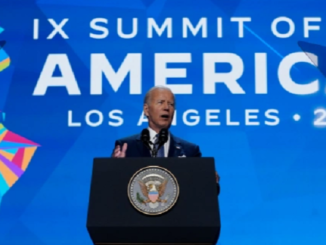
By Michael Barone
Most Americans have an image of Mexico as a nation convulsed by violent drug wars and enervated by the exodus of hundreds of thousands of desperate immigrants across our southern border.
That image is out of date. The drug war has largely quieted down and scarcely affects most of the country, and, according to the Pew Hispanic Center, net migration from Mexico to the United States since 2007 has fallen to zero.
What has been happening in Mexico recently is far more encouraging. It is the culmination of reforms that have been in train, but have been frustratingly delayed, for the last 25 years.
Some historical background is in order. For 71 years, Mexican politics and government were totally dominated by the paradoxically named Party of the Institutional Revolution (PRI), which held the presidency and virtually all governorships from 1929 to 2000.
Under the PRI system, presidents served one six-year term and in their last year — usually a time of catastrophes — chose their successors, who paraded around the country and were elected without difficulty.
Once in office, the new president blamed all his problems on his predecessor, who often left the country. This system suited the sensibility of a nation whose culture is still at least partly Aztec: It combined elements of calendrical regularity, elaborate ceremony and human sacrifice.
This system worked tolerably well for 30-some years. But as time went on, it produced widespread corruption, periodic currency devaluations and massive outmigration. Mexico seemed to be falling further behind the United States.
Reform began when Machiavellian President Carlos Salinas, elected in 1988, started opening up its political process and was joined by Texans George H. W. Bush and Lloyd Bentsen in pushing successfully for the North American Free Trade Agreement. With support from then-President Clinton, Congress approved NAFTA in 1993.
Mexico reformed its electoral process in the 1990s with key verification from exit poll pioneer Warren Mitofsky. The PRI lost its congressional majorities in 1997, and in 2000, Vicente Fox of the center-right PAN party was elected president over the candidates of the PRI and the leftist PRD. In 2006, Fox was succeeded by the PAN’s Felipe Calderon.
But Fox and Calderon were unable to reform Mexico’s government-owned oil company Pemex or its dysfunctional, union-dominated education system because of united congressional opposition by the PRI and PRD.
And they got sidetracked on other issues — Fox in responding to Zapatista protests, Calderon in waging war (with the army) on the drug lords.
In July 2012, the PRI returned to power with the election of Enrique Peña Nieto. He looked like a conventional politician: governor of the state that includes most Mexico City suburbs, movie-star handsome, a widower who was wooing a telenovela star.
But Peña has proven to be an effective reformer. On taking office, he joined with the PAN and PRD in a Pact for Mexico which produced tripartisan reforms.
One was in education, with teacher promotion determined by merit rather than (this is not a misprint) heredity. The day after the reform was passed, Elba Esther Gordillo, the powerful head of the teacher union, was arrested for embezzlement.
The coalition also passed telecom reform, potentially cutting rates that have made Telmex owner Carlos Slim one of the richest people in the world.
The toughest issue was reforming Pemex, the monopoly created when PRI President Lazaro Cardenas nationalized oil companies in 1938. One-third of government revenues come from Pemex, but production fell 27 percent between 2004 and 2013.
Pemex’s Cantarell oilfield in the Gulf is sputtering, and it lacks the expertise and capital to tap Mexico’s plentiful shale oil and gas reserves. But the idea that “the people” own Mexico’s oil still has wide appeal, and the PRD split from the coalition and opposed change.
It passed with PRI and PAN support in December. Now foreign oil firms will be able to invest and book Mexican resources as reserves, stimulating growth and job creation.
Mexico’s manufacturing sector has been booming, and increasingly competitive with China, and the country is graduating record numbers of engineers and scientists.
By many measures, Mexico is now a majority middle-class nation. Mexicans are buying (mortgage-financed) houses in new subdivisions and driving to Walmart and Costco shopping malls in their pickups and SUVs.
Peña’s reforms have pushed Mexico sharply forward on a path on which it had already made significant progress.
That’s good news for Mexico — and for its neighbors to the north.
Michael Barone is senior political analyst for the Washington Examiner, co-author of The Almanac of American Politics and fellow at American Enterprise Institute.



